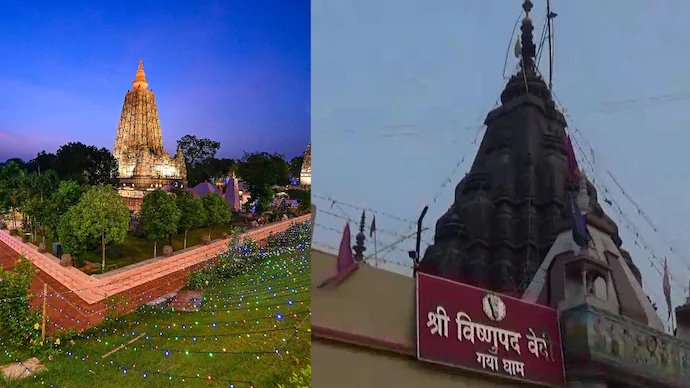Note4Students
From UPSC perspective, the following things are important :
Prelims level: Vishnupad and Mahabodhi Temples; Kashi Vishwanath Temple
Why in the News?
- Finance Minister announced during her Union Budget speech that corridor projects will be built for the Vishnupad Temple at Gaya and the Mahabodhi Temple at Bodh Gaya in Bihar.
- These will be modelled on the Kashi Vishwanath Temple Corridor, to transform them into world-class pilgrim and tourist destinations.
About the Vishnupad Temple at Gaya
| Details | |
| Dedicated to | Lord Vishnu |
| Significance | Contains a 40 cm long footprint of Lord Vishnu; considered sacred in Hinduism; attracts pilgrims for “Pind Daan” rituals. |
| Historical Importance | Believed to be over 1000 years old; associated with various legends and historical references in Hindu texts. |
| Architecture |
|
| Built by | Queen Ahilyabai Holkar of Indore in 1787. |
| Festivals and Rituals |
|
| Mythology | The footprint is believed to be where Lord Vishnu placed his foot to subdue the demon Gayasur. |
| Associated River | Located on the banks of the Phalgu River, considered sacred for ritual offerings. |
| Access and Visitation | Accessible year-round; major pilgrimage site with facilities for devotees. |
| Recent Developments | Ongoing efforts for preservation and restoration; improved infrastructure for pilgrims. |
About the Mahabodhi Temple Complex:
| Details | |
| Location | Bodh Gaya, Bihar; |
| Significance | Marks the location where Buddha attained enlightenment |
| UNESCO Status | World Heritage Site since 2002 |
| Historical Importance |
|
| Original Construction | Built by Mauryan Emperor Ashoka around 260 BCE |
| Reconstruction | Reconstructed in brick during the late Gupta period (5th or 6th centuries) |
| Archaeological Finds |
|
| Main Temple Structure | Dates from the 6th century CE, incorporates parts from 2nd or 3rd century CE |
| Architectural Features |
|
| Materials | Made mostly of brick covered with stucco |
| Bodhi Tree | Direct descendant of the original tree under which Buddha attained enlightenment |
| Traditional Accounts | Describes 7 weeks Buddha spent meditating after enlightenment at various spots within the complex |
| Decline and Revival |
|
Get an IAS/IPS ranker as your 1: 1 personal mentor for UPSC 2024


